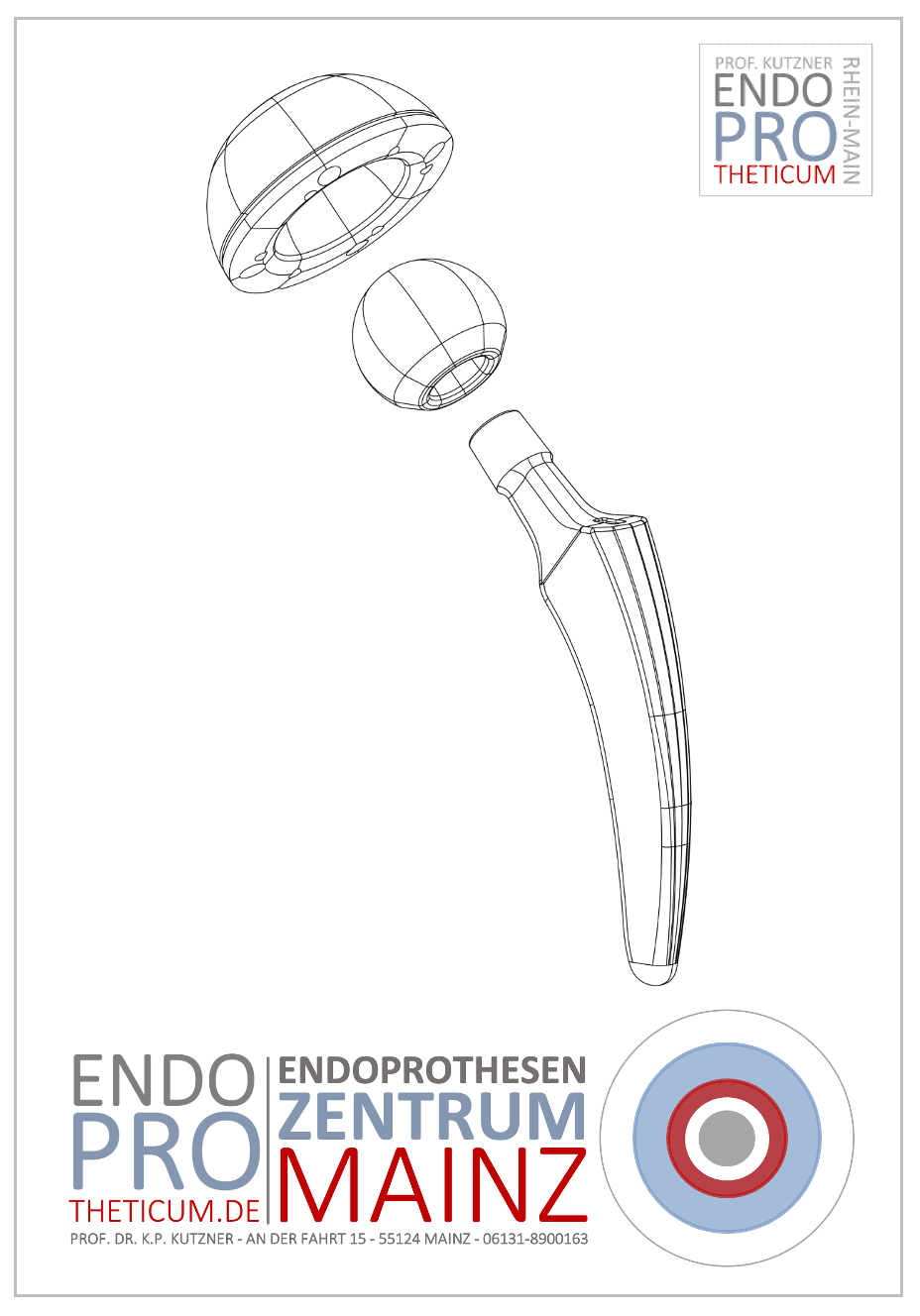Knee prosthesis – what is prohibited with a total knee replacement? Rules, prohibitions, and everyday reality
Are there still absolute bans on knee prostheses (TKAs) today?

Anyone who receives a knee prosthesis (medically known as a total knee replacement) will sooner or later face the crucial question: What am I actually allowed to do with my new prosthesis – and what is prohibited?
The concern is understandable: For decades, patients following joint replacement surgery heard blanket rules and rigid prohibitions. No jogging, no kneeling, no heavy lifting—the list was long and intimidating. Many people lived for years in fear of "ruining" the new joint with a wrong movement.
But the good news is: Today, these blanket restrictions no longer apply. Modern surgical techniques, sophisticated implants, and sophisticated rehabilitation programs have fundamentally changed the situation. Most people can live their lives after a total knee replacement with virtually no restrictions.
Of course, there are still areas that remain critical: Kneeling is a challenge for many patients, and sports involving extremely high impact – such as marathon running or intense soccer – are not recommended in every case. But that doesn't mean that life after a knee replacement is full of limitations. On the contrary: For most patients, a new world of possibilities opens up after the surgery.
Knee prosthesis and rules – where does the idea of prohibitions come from?
The idea that one needs to be particularly careful with a total knee replacement has historical roots. In the past, the risk of the prosthesis becoming loose due to wear and tear or incorrect loading was significantly higher. Surgical techniques were also less gentle, and rehabilitation was slower. Therefore, doctors gave their patients lists of prohibitions designed to prevent as many risks as possible.
Typical “old rules” were:
- No more kneeling in everyday life.
- No sporting activities involving jumping or sprinting.
- No heavy lifting or squatting.
- Driving only after several months.
These rules caused uncertainty—many patients felt they would never be able to live a normal life again after a knee replacement. Today we know: This rigid view no longer reflects the current state of science.
What does modern research say?
Current studies and recommendations from major professional societies clearly demonstrate that there is no universally applicable list of "prohibited" movements or activities after a total knee replacement. Instead, it depends on the individual situation: age, fitness, implant type, surgical technique, and rehabilitation determine what is possible.
Many patients achieve excellent mobility after surgery, can perform everyday activities without problems, and can even return to sports. Limitations are more likely to be individual—for example, due to scar tissue, muscular deficiencies, or personal pain thresholds—than to the implant itself.
Kneeling with a knee prosthesis – why is it often difficult?
The topic of "kneeling" is almost a classic among questions about knee replacements . Many people would like to be able to work in the garden, mop the floor, or kneel in church without any problems in their everyday lives. But for many, this remains precisely the difficulty.
The reasons for this are manifold:
- Scar sensitivity: The surgical scar is located directly above the front of the knee and can be painful when pressure is applied.
- Soft tissue tension: Kneeling places significant strain on the skin, tendons, and muscles. Some patients experience an unpleasant pulling sensation.
- Fear factor: Many people simply don’t dare to do it because they are worried that the implant could be damaged.
Studies show that only a portion of patients can kneel comfortably after a knee replacement . Some adapt to alternative positions (e.g., kneeling on a pillow or squatting). Others avoid kneeling altogether—without this significantly restricting their daily activities. It's important to remember that kneeling isn't forbidden ; it's just not possible for everyone.
Sport after knee replacement – what rules really apply today?
Perspectives on sports have also changed dramatically. It used to be the rule: "No sports with a prosthesis." Today we know that exercise is crucial for the durability and function of a knee prosthesis.
Recommended are:
- Walking and Nordic Walking
- Cycling (indoors and outdoors)
- Swimming and aqua fitness
- Hike
- golf
- Yoga or Pilates (adapted)
With caution, the following are possible:
- Skiing (moderate, for experienced athletes)
- Tennis doubles
- Dance
Not recommended are:
- Marathon running or intensive jogging
- Football, handball, basketball (high-risk contact sports)
- Extreme sports involving jumps or rapid changes of direction
Here, too, nothing is absolutely "forbidden." If you were a passionate runner before surgery, you may be able to resume moderate running after a total knee replacement—always in consultation with your surgeon.
Everyday life with a knee prosthesis – what can I do and what can’t I do?
In addition to sports and knee problems, many everyday questions also arise. Here are the most important answers:
- Climbing stairs: No problem – on the contrary, it is an important part of rehabilitation.
- Driving: Possible again after about 4–6 weeks, provided mobility and reaction time are maintained.
- Heavy lifting: Generally permitted, but you should pay attention to good technique and not start lifting heavy loads immediately after surgery.
- Sexuality: Possible without restrictions as soon as you feel comfortable.
- Travel: Flying or long car journeys are permitted, but ensure sufficient exercise to prevent thrombosis.
This shows that there are hardly any real prohibitions in everyday life these days.
Rehabilitation – the key to more freedom instead of bans
Many supposed "rules" after a knee replacement are not caused by the implant itself, but by inadequate rehabilitation. Total knee replacement is a technical masterpiece designed to restore mobility and stability. However, without active training, patients cannot fully utilize these potentials.
Modern rehabilitation therefore relies on:
- Early mobilization: Light movements and walking exercises begin the day after surgery.
- Muscle building: The quadriceps, which stabilize the knee, are particularly important. Those who train this muscle consistently will benefit in the long run from improved mobility and less pain.
- Coordination and balance: Exercises to improve balance help prevent falls and increase everyday resilience.
- Functional training: Climbing stairs, kneeling on cushions, or gardening are specifically integrated into the exercise plan.
Anyone who takes rehab seriously will find that many perceived prohibitions vanish into thin air. Instead of "I'm not allowed to do that anymore," it's "I can do that again!"
Myths about total knee replacement – what’s really true?
around knee replacements , leaving patients confused. It's time to dispel them:
Myth 1: “Kneeling is forbidden.”
Wrong. Kneeling isn't forbidden—it's just uncomfortable for many patients. With practice, special supports, and patience, it can often be improved. However, some patients will never be able to do it the way they used to.
Myth 2: “I’m not allowed to play sports anymore with a knee replacement.”
Also wrong. Exercise is expressly encouraged! Most moderate-impact sports are perfectly possible. Even skiing or doubles tennis are possible for experienced athletes.
Myth 3: “A total knee replacement only lasts 10 years, then you need a new one.”
Outdated. Modern implants today achieve lifespans of 15–25 years or more. Some patients even keep their prosthesis for life.
Myth 4: “Heavy lifting loosens the prosthesis.”
Not generally true. Of course, you shouldn't provoke extreme loads, but normal everyday lifting is generally not a problem. What's crucial is proper lifting technique and strong muscles.
How long does a knee prosthesis last?
An important aspect often hidden behind supposed "rules" is durability. Ultimately, a total knee replacement function painlessly for as long as possible.
- Average lifespan: 15–25 years, depending on load, implant type and individual situation.
- The main factor: wear and tear on the polyethylene inlay (the plastic sliding surface). However, modern materials are very durable.
- Revisions: If a prosthesis needs to be replaced, this is now a routine operation, even if it is technically more complex.
The fear that every wrong movement will dramatically shorten your lifespan is unfounded. It's much more important to stay active to strengthen your muscles and joints.
Everyday life with knee replacement – small tips, big impact
Even though there are hardly any blanket prohibitions anymore, a few rules of thumb will help you be happy your knee prosthesis
- Start gently: After surgery, begin with light everyday movements and increase slowly.
- Use aids: Knee pads, ergonomic gardening tools or non-slip mats make many tasks easier.
- Listen to your body: Pain is a warning sign. If a movement is consistently uncomfortable, it should be adjusted.
- Check regularly: Annual check-ups with an orthopedist ensure that the knee replacement fits well and that no complications arise.
In this way, everyday life becomes natural again, step by step.
Why there are hardly any bans on total knee replacements these days
In summary:
- Modern implants are more stable and durable than ever before.
- Surgical techniques are more gentle, scars are smaller, and muscles are less damaged.
- Rehabilitation programs are more active and individualized.
This means that rigid rules and prohibitions from the past no longer apply. Patients are allowed—and encouraged—to move freely again. Restrictions exist only in a few areas, particularly when kneeling and during extremely strenuous , high-impact sports .
The most important thing for patients: realistic expectations
As significant as the advances are, a knee prosthesis is not a "bionic joint." It can relieve pain, restore mobility, and improve quality of life—but it is not a 100% replacement for the original knee.
Realistic expectations are therefore crucial:
- Yes, you can be active and sporty again.
- No, you do not have to observe any strict prohibitions.
- But: Not every extreme movement will be possible, and kneeling may remain permanently restricted.
Anyone who knows this will go through life more confidently and contentedly with their knee replacement .
Conclusion: Freedom instead of bans
The central message is: With a modern knee prosthesis, there are almost no blanket prohibitions anymore. Instead of restrictive rules, there are recommendations that make everyday life easier and preserve the prosthesis in the long term.
- Kneeling : difficult for many, but not forbidden.
- Sport : definitely encouraged, with a focus on joint-friendly activities.
- Everyday life : almost unlimited if you take rehabilitation seriously.
Life after a total knee replacement does not mean giving up, but rather new possibilities – pain-free, active and self-determined.
Knee prosthesis – your consultation at ENDOPROTHETICUM Rhein-Main
If you are considering whether a knee replacement is suitable for you, or if you are unsure about which activities are permitted for you after a total knee replacement, you should seek specialist advice.
At ENDOPROTHETICUM Rhein-Main under the direction of Prof. Dr. Karl Philipp Kutzner you can expect:
- Modern knee arthroplasty with the latest surgical techniques
- Individual advice on everyday life, sports and lifestyle
- Many years of experience in the treatment of complex knee diseases
- Personal support so that you have realistic but also positive expectations of your new prosthesis
👉 Arrange a consultation now ( www.endoprotheticum.de ) and find out how you can live your life after a total knee replacement in an active, safe and unencumbered way.
MAKE AN APPOINTMENT?
You are welcome to make an appointment either by phone or online .



























